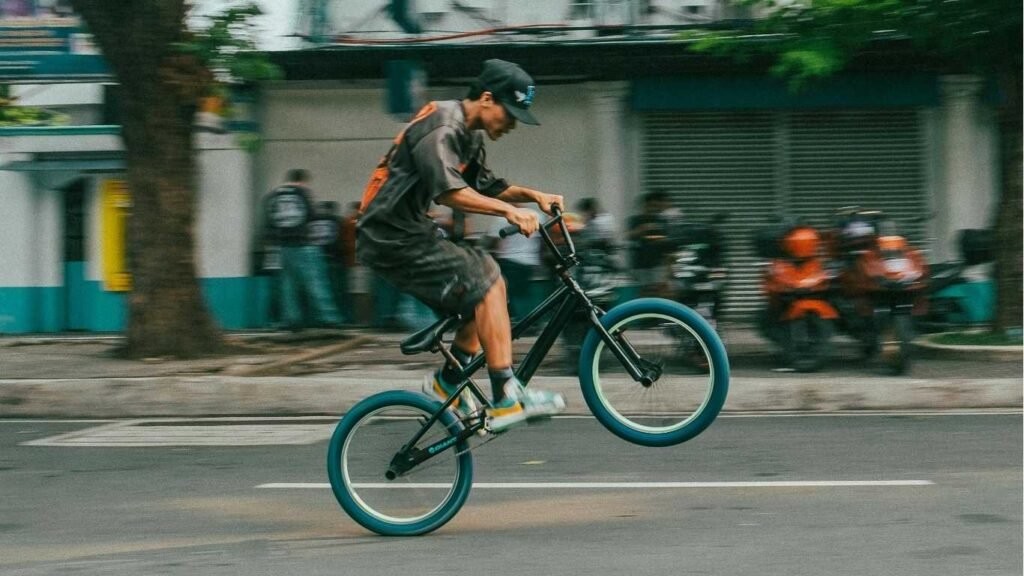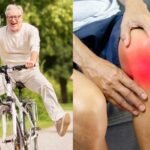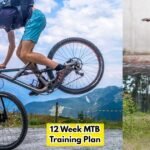Most people think mountain bikes are only for trails, mud, and rocks. But the truth is, many of us ride them more in cities than in forests.
So, is a mountain bike really good for city riding?
SHORT ANSWER—YES, it is good, but can be excellent, if you know how to make it work for city life.
Let’s talk about this properly, because there are a lot of people who don’t realize it before they switch to it.
Why Mountain Bikes Actually Work Well in City
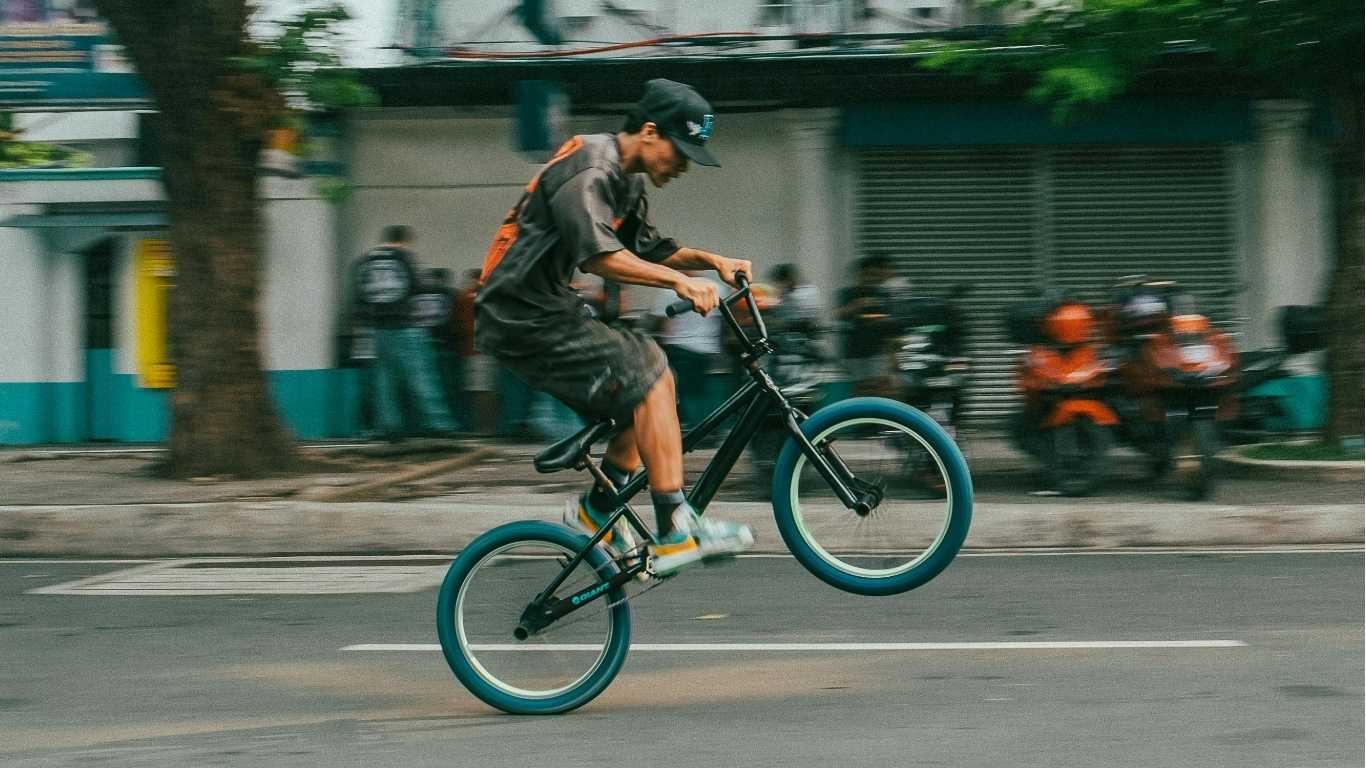
City roads might look smooth at first glance, but they’re full of surprises. Potholes, uneven patches, broken curbs, and random gravel. Exactly the type of chaos mountain bikes are built for.
Reason why it works:
- Control: Mtb has wider tires that give extra grip in corners and sudden stops.
- Braking: Disc brakes respond faster in rain or on dusty roads.
- Durability: These bikes handle rough patches daily, no problem.
Mountain Biking is Not Always Smooth
If you ride long distances daily, you’ll notice when a mountain bike starts to feel heavy.
That’s because MTBs are made for strength, not speed. So when you’re on flat city roads, it can feel like you’re pedaling a tank.
A few negative things you’ll likely notice on the city road:
- Speed: It’s slower than a road or hybrid bike.
- Rolling resistance: Those knobby tires grip more, but they also resist more.
- Weight: Carrying it upstairs or loading it in your car isn’t fun.
Still, it’s not a dealbreaker. Because with small changes, you can easily make an MTB city-ready.
Also read: What Happens If You Bike Every Day for 30 Minutes — it’s a solid post that’ll show you how small daily rides can make your body adapt fast.
How to Make Your Mountain Bike Perfect for City Riding

If you already own one, don’t waste money buying another bike. Just tweak a few things.
Here’s what really makes the difference:
- Change the Tires: The biggest upgrade. Switch to semi-slick tires or urban MTB tires. They roll faster, smoother, and still give traction when roads get slippery. You’ll immediately feel lighter.
- Lock the Suspension: Most modern MTBs have a suspension lockout. Use it. You’ll save a lot of pedaling power on paved roads.
- Adjust Tire Pressure: City rides = higher tire pressure. It reduces drag and increases rolling speed. Just don’t overdo it—you still want a bit of comfort.
- Add Mudguards and Kickstand: Small things, but if you’re riding to work or the grocery store, you’ll thank yourself later.
- Tune Your Gears: For city riding, you won’t need super low gears. So, keep it mid-range for smooth transitions and efficiency.
- Install Lights and Reflectors: In urban areas, you’ll get unpredictable traffic. Bright front and rear lights are non-negotiable.
Also read: 9 Effective Ways to Build Stamina for Longer Mountain Bike Rides — great if you’re planning to use your MTB for both city and weekend trail rides.
MTB vs Hybrid for City — What’s Better Really?
People always compare mountain bikes with hybrids. But it’s not really about “better,” it’s about what fits you.
If your daily route includes uneven roads, bumps, or even a bit of dirt, go with the MTB. The comfort and confidence it gives can’t be matched.
But if you’re commuting long, flat distances every day—say, 20–30 km—and want speed, a hybrid might make more sense.
Why I still prefer MTB for most city riders:
- Stronger frame = longer life.
- More control in unexpected conditions.
- Easier to handle potholes and sidewalks.
- Safer in rain and sudden stops.
And if you’ve read Clipless vs Flat Pedals – Which One Should You Really Choose, you’ll see how even pedal choice can make your city riding experience completely different. Most casual city riders prefer flats, and for good reason—it’s stop and go, and comfort wins here.
Why Many City Riders Still Choose Mountain Bikes
Even though MTBs aren’t the fastest, they’re one of the most practical choices for urban use.
You can go anywhere, literally. Paved road, park trail, shortcut alley—it doesn’t matter.
That’s the beauty of it.
You’ll feel safer when braking, more comfortable over bumps, and more confident navigating tight spaces.
Plus, most MTBs have a more upright position, so you can see traffic better. That one small thing reduces risk massively in cities.
If you’re new to cycling or returning after a long break, this comfort makes you stick to it. Once you start enjoying the ride, consistency becomes natural.
How to Get the Best Out of MTB in Urban Life
These are the things you’ll actually face:
- Morning rush traffic: Use your gears smartly—lower before stops so you restart easily.
- Rainy days: MTB tires grip well, but mudguards save your clothes.
- Night rides: A proper headlight and reflective gear are a must.
- Bike parking: Always carry a good U-lock; MTBs attract attention.
Remember, these bikes are made for abuse, so even if you hit rough lanes daily, they’ll handle it.
And if you plan to mix weekend rides with commutes, you’re basically hitting two goals with one bike.
Feel of Riding MTB in City
If you’ve ever tried it, you know that feeling—it’s a bit more raw, more engaging. Every pedal feels stronger, every turn feels secure.
The wider handlebars give a sense of control that hybrids or road bikes don’t.
You can weave through tight traffic, take shortcuts, and jump over small curbs without hesitation.
And when you hit an open stretch, it’s not about top speed—it’s about that steady rhythm. That’s what keeps people hooked.
Common Mistakes People Make with MTBs in City
Even though it’s a great setup, a few habits make riders waste effort unnecessarily.
- Not changing tire type or pressure: Those trail tires slow you more than you think.
- Ignoring chain cleaning: City dust and rain quickly ruin your drivetrain.
- Wrong saddle height: Leads to knee pain and fatigue.
- No lights or reflectors: One of the biggest safety mistakes.
- Not locking suspension: You lose energy for no reason on flat roads.
Fix these, and your MTB will roll like a city champ.
When an MTB Isn’t the Best Choice
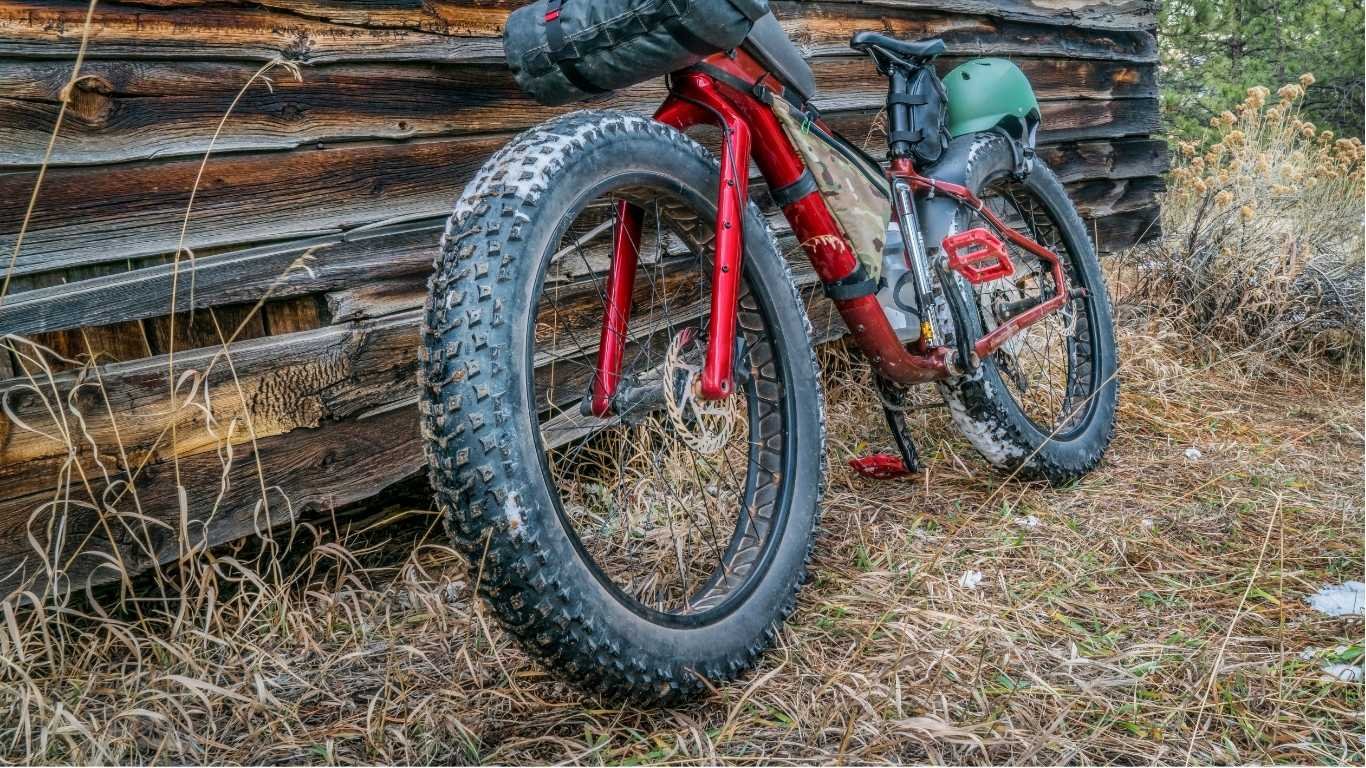
There are a few exceptions. If your daily ride is mostly flat, open, smooth road—no potholes, no dirt—then you’ll find an MTB slower.
Especially if it’s a full-suspension one, which adds more weight.
A hardtail MTB, though, balances things better.
It’s lighter and perfect for mixed surfaces—exactly what most cities have.
Also, if you ride long-distance commutes daily (like 25 km one way), and you care more about time and less about comfort, a hybrid or gravel bike might serve you better.
But if your route involves rough roads, shortcuts, curb jumps, or a bit of unpredictable terrain, nothing beats the feel and control of a mountain bike.
Maintenance Tips (Keep It Running Like New)
City dust and pollution are silent killers for your bike.
Here’s how I keep mine smooth:
- Clean chain weekly. A quick wipe and lube goes a long way.
- Check tire pressure twice a week. City rides lose air faster.
- Inspect brake pads regularly. Traffic means more stopping, more wear.
- Wipe the frame after wet rides. Keeps rust away.
- Check lights before night rides. Don’t rely on street lamps.
It sounds simple, but consistency is what keeps your bike healthy.
And if you’re someone who rides daily, small care saves a lot of money later.
Real Benefit People Overlook
You might think using an MTB in the city is just about comfort or control. But there’s another huge advantage—fitness.
Because it’s a bit heavier and slower, it makes your daily ride a natural workout.
You build stamina, leg strength, and core balance without even planning it.
You’ll notice in a week or two, climbing hills or bridges feels easier.
That’s because you’re working slightly harder than a road bike rider every day.
Why I Personally Like Using MTB in City
I’ll be honest—I sometimes prefer the feel of an MTB over any other bike in daily city riding. It feels solid, predictable, safe.
Even when the road turns ugly, I don’t worry about flat tires or slipping. I just ride.
I’ve tried switching to hybrids, but every time I missed the control of an MTB.
The best thing? You can finish work on Friday and take the same bike for a weekend trail. No switching, no storing extra bikes.
If your city is like mine, with mixed roads and random bumps, it’s a no-brainer choice.
Final Thoughts
So yes—mountain bikes are great for city riding, especially if you value comfort, control, and safety over top speed.
Once you tweak the setup a bit—tires, suspension, accessories—you’ll realize how versatile these bikes are.
They may not be the fastest, but they’ll take you anywhere, anytime, and survive anything.
That’s why I say, if you already own one, don’t keep it for weekends only—make it your daily ride.
FAQs
Can I use my mountain bike every day for commuting in the city?
Yes, and honestly, that’s where most people end up riding it. A mountain bike can handle broken roads, uneven patches, and rough shortcuts way better than any city or hybrid bike.
You just need to keep small things right—proper tire pressure, a clean drivetrain, and lights for early mornings or evenings.
Once you get used to the comfort and control, you’ll rarely want to switch. You can even mix it with short fitness rides.
Are mountain bikes good for long city rides?
They are, but it depends on how far you go. For 10–15 km commutes, perfect.
For longer distances, you might feel more effort because MTBs are heavier.
You can still improve efficiency by locking the suspension and adjusting the gears.
Should I use flat pedals or clipless for city rides?
Flat pedals are better for most city riders. You’ll stop often in traffic, and flats let you get your feet down quickly.
Clipless pedals make sense only if you’re confident or doing longer, steady rides.
Can I still take my city-used mountain bike on trails?
Of course. That’s the best part of owning an MTB—it’s versatile. You can ride to work all week, then unlock the suspension and hit trails on weekends.
Just keep a quick maintenance routine: check brakes, lube the chain, and make sure your tires are ready for rough surfaces.

Ali is the founder of Mountain Bike Insider and an passionate rider with years of hands-on experience in mountain biking. From testing gear to exploring trails, Ali writes based on real riding knowledge to help others make smart, safe, and enjoyable biking choices. Every guide is built on research, personal use, and a passion for the sport.

